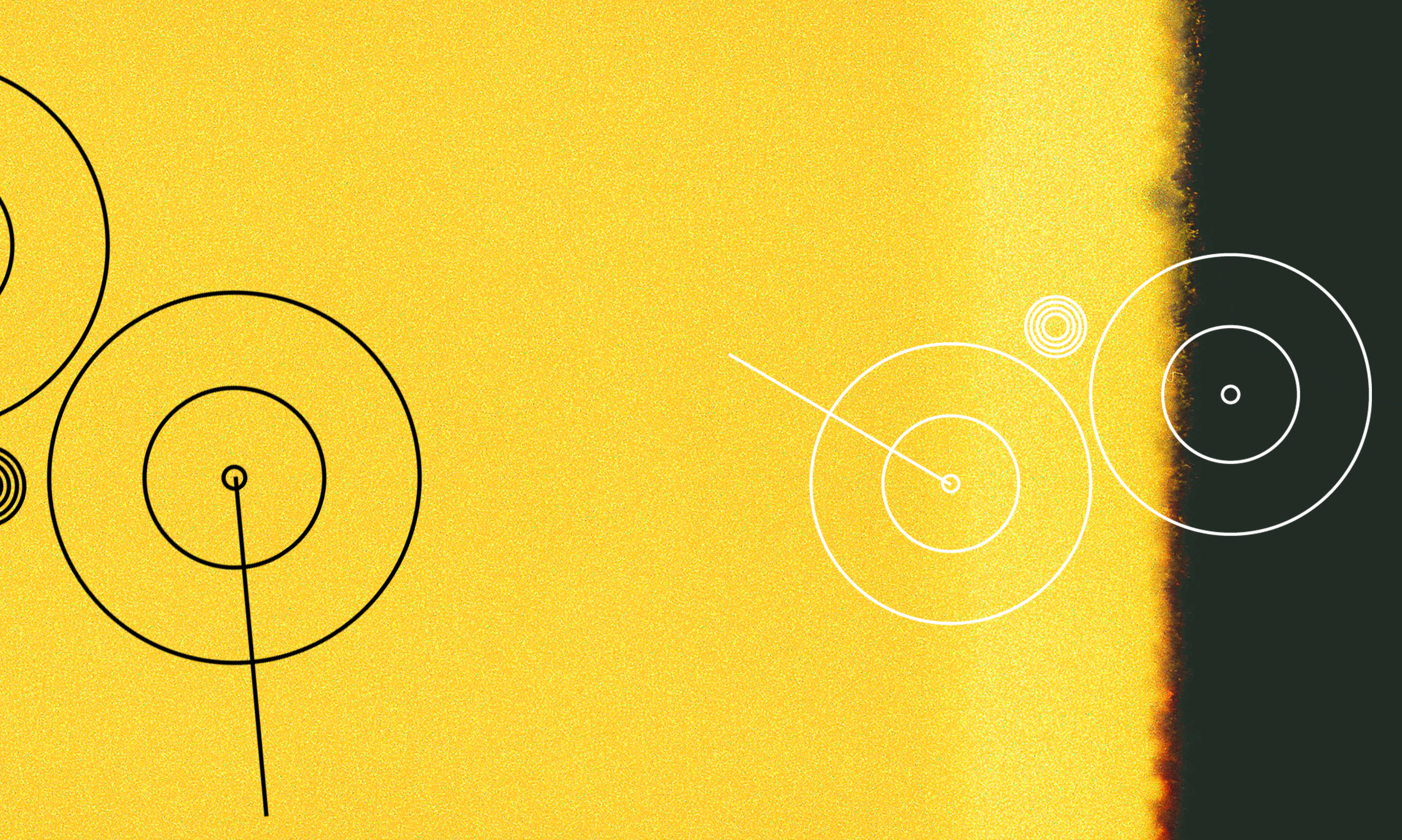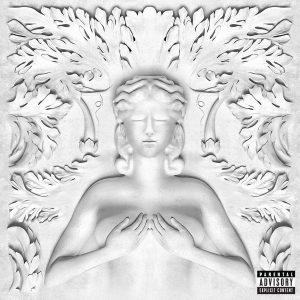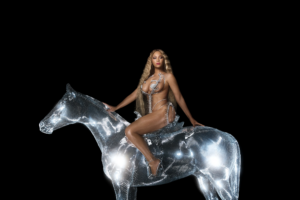Put on Drake’s Honestly, Nevermind (2022), Beyoncé’s Renaissance (2022), or this summer’s biggest album, Bad Bunny’s Un Verano Sin Ti (2022), and one thing is certain: You’re going to want to dance. But the groove running through some of this summer’s hottest releases isn’t exactly new. From hip-hop to hyperpop, music’s biggest names are playing with house music, a genre born in the gay clubs of Chicago and New York that dominated the ’90s airwaves.
House music is characterized by its heavy electronic drums cut with hi-hats or snares, deep bass, and fast tempo. In the right conditions (i.e. a club dancefloor), these elements combine to create a sound that vibrates through your whole body. House isn’t just hedonistic; its founders wanted to create a genre that provided joy and release for the Black and Latinx LGBTQ+ community while simultaneously creating space for resistance to a hostile sociopolitical environment. This summer, house has hit the mainstream once again—but today’s artists are more willing to recognize and honor the genre’s origins.
The story of house begins with that of another upbeat dance genre: disco. In the mid-1970s, disco was hitting a fever pitch; this was the era of ABBA’s “Dancing Queen,” of Donna Summer’s “Hot Stuff.” But it was also the era of a white, conservative backlash to the genre developed by and for queer people of color, culminating in a Chicago riot devoted to burning disco records in 1979. Whether you were a disco devotee or shouting “Disco sucks!” at an anti-disco rally, its cultural impact was undeniable.
But in a Chicago club called The Warehouse largely patronized by Black LGBTQ+ people, disco was taking on a new shape under the leadership of DJ Frankie Knuckles. Using samples of disco tracks and its signature four-on-the-floor beat as a base, Knuckles created highly danceable tracks infused with electronic drum machines. If disco was a shimmy, house was an all-out strut; with smooth, round synths and pounding bass, it projected an effortless cool. Naturally, this new genre was dubbed “house” after The Warehouse.
Since birth, house has been the music of the marginalized. Because of its undeniable attitude and its previous associations with queer spaces, the genre was quickly adopted as the soundtrack to ballroom, a pageant subculture for queer people of color, across the country. Created to showcase the talent and artistry of Black and Latinx LGBTQ+ people, which was often dismissed by white queer people in existing drag pageant circuits, the balls continue to serve as important spaces for expression and connection within the LGBTQ+ community. With ball participants walking, dancing, and posing in various “categories,” ballroom created opportunity to perform radical creativity, inhabiting social roles queer people of color historically have struggled to access, including corporate America. The rise of house is inextricably linked to the history of ballroom: Even as house’s popularity within the mainstream has ebbed and flowed, its role in the balls has kept its sound alive.
As house made its way to the mainstream in the ’90s, the genre’s marginalized origins were often erased or obscured. U.K. labels began to pick up acts from Chicago, and house music quickly spread across Europe. When it reached international markets, house became largely associated with the European dance scene and U.K. rave culture. As more mainstream European artists like Daft Punk and The Style Council experimented with the genre, the music was no longer exclusive to Black LGBTQ+ dance clubs where the genre was born, despite their clear debt to these spaces.
This summer’s wave of house seems poised to right this historical wrong—particularly in Renaissance, where ballroom culture is at the forefront. The snapping of fans—an accessory popular with drag queens and unavoidable at balls—adorns “HEATED” as Beyoncé imitates a ballroom emcee, doling out “tens, tens, tens, across the board,” and ballroom chants embellish “PURE/HONEY.”
Renaissance’s reverence for the Black LGBTQ+ people who birthed house is both a personal and political project for Beyoncé. The album is in fact dedicated to her cousin, Uncle Johnny, who Beyoncé refers to as her “godmother.” According to Beyoncé’s mother, Uncle Johnny helped raise Beyoncé and introduced her to house music, and his death due to AIDS-related illness in the late ’90s had a deep impact on the family.
Even when not tied to the LGBTQ+ community, some of house’s new practitioners have maintained the genre’s role as a political tool. On Bad Bunny’s “El Apagón,” house lays the foundation for a criticism of rapid gentrification in Puerto Rico. Over a rolling bass drum and Latin percussion sampled from salsa legend Ismael Rivera’s “Controversia,” Bad Bunny criticizes appropriation of Latinx identities. In the song’s outro, Gabriela Berlingeri’s soaring vocals recall house classics like Crystal Waters’ “Gypsy Woman,” as she sings, “I don’t want to leave here / let them go … this is my beach / this is my sun / this is my land / this is me.” The genre’s history makes house the perfect fit for expressing concerns about displacement and cultural erasure.
Of course, not every recent spin on house is overtly political. Charli XCX plays it safe on “Used to Know Me,” which heavily incorporates Robin S.’ classic “Show Me Love” (which also gained new life on Beyoncé’s “BREAK MY SOUL”). Shygirl’s “Cleo” is even bolder, embellishing its house beat with soaring strings.
Drake’s Honestly, Nevermind and its solid lineup of light-hearted odes to house came as a surprise for many. While Drake has shifted toward danceability over time, Honestly, Nevermind is a dance record, full stop. Uptempo and colored with synth riffs, tracks like “Massive” and “Texts Go Green” instantly conjure a sweaty club dancefloor. Drake includes significantly fewer nods to house classics than Beyoncé or Bad Bunny; though acclaimed house DJ Black Coffee worked on the project, Honestly, Nevermind features only one house sample. Still, the strong four-on-the-floor bass drum coursing through nearly the entire record undeniably makes Honestly, Nevermind a clear member of the house revival.
While house’s rebirth has largely been praised, critics have raised concerns about appropriation. The music video for Megan Thee Stallion’s recent “Her,” a house track infused with Meg’s signature swagger, has garnered criticism from ballroom legend Leiomy Maldonado and others for its use of voguing, a dance style built by ballroom culture. A long history of mainstream artists borrowing from house and voguing exists: Madonna’s 1990 single “Vogue” notably featured a bare-bones version of the dance. The visuals and sound of “Vogue” helped establish Madonna as a gay icon, but in an era of increased visibility for LGBTQ+ people, the response to mainstream artists experimenting with LGBTQ+ art forms is distinctly frostier. The controversy over “Her” raises important questions about how artists should responsibly engage with cultures outside their own without overshadowing members of marginalized communities.
At its best, house music is explosively joyful, and it makes for a perfect reaction to an era of isolation, confinement, and chaos. House deserves respect, and the new generation of mainstream artists working with the genre must navigate a music landscape that is increasingly—and rightly—sensitive to issues of cultural ownership. Artists like Beyoncé and Bad Bunny have millions of people who look up to them, and with their following they carry a responsibility to bring appreciation to this rich subculture.






Lmao the intellectuals explanation.
…. boring.
How can anyone read this drivel?